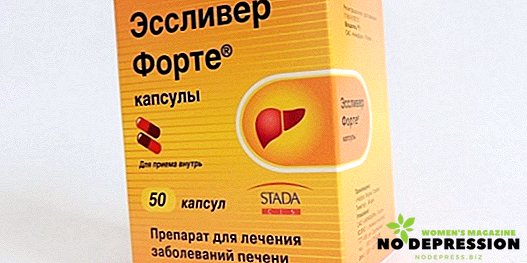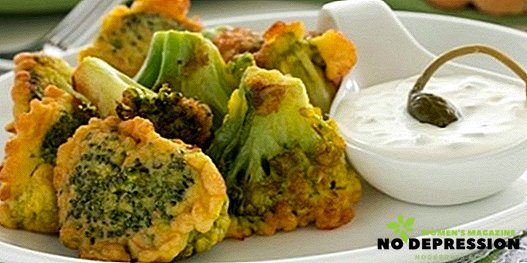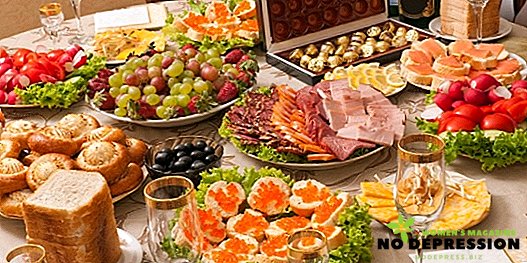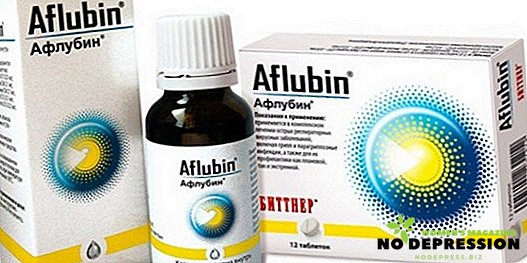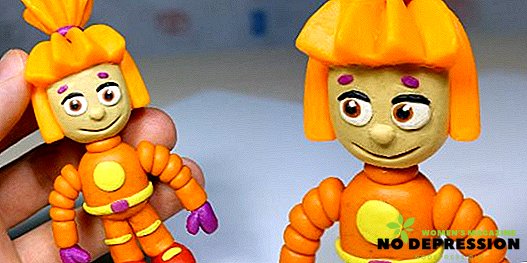A louse is a small parasite that feeds on blood. Plant small insect mainly in human hair and delivers a lot of inconvenience. Lice are a rather delicate problem that must be eliminated as soon as possible.
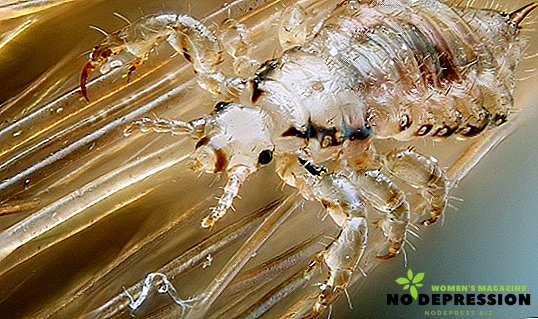
Features biology lice
Mouth apparatus lice perfectly adapted to feed on blood. In a soft tube, two pointed stilettos are hidden, which pierce the outer layer of the epidermis. At the end of the tube there are a lot of small hooks, with the help of which the parasite clings to the skin integument in order to be sated with blood unhindered.
When a louse bites through the outer layers of the skin, a special secret is secreted from the insect's salivary glands, which prevents blood from clotting. Getting into the wound formed by the bite, saliva causes unbearable itching and irritates the tissue.
What are the photos
If you suspect the development of pediculosis (parasitic skin lesions), the first step is to determine the type of pathogen. To distinguish a louse from other small parasites, it is necessary to know how this insect looks.
Head lice
 The insect has an elongated body, which is clearly divided into the abdomen and cephalothorax.
The insect has an elongated body, which is clearly divided into the abdomen and cephalothorax.
A distinctive feature of lice is that the cephalothorax is much smaller than the abdomen itself.
After the parasite is filled with blood, the belly changes its shade to red
The size of the insect is 1.5-4.5 mm, and six small limbs allow you to freely move in the hairy parts of the body. At the ends of the legs, you can observe the rounded crescent-shaped nails.
Nits
 If you look at the nits with the naked eye, then you can take it for a white dot. With a large accumulation of nits in the hair, they resemble the usual dandruff.
If you look at the nits with the naked eye, then you can take it for a white dot. With a large accumulation of nits in the hair, they resemble the usual dandruff.
If the nits are examined under a magnifying glass or a microscope, it looks like an oblong capsule that is firmly attached to the hair. Regarding pubic nits, they have a slightly different shape, more rounded.
The size of nits reaches 0.8 mm, and their diameter is 0.4 mm. At the bottom of the nits there are small formations, which they cling to the hairs. In the upper part there is a tiny capsule, from which the larva appears.
Linen louse
Hanging louse is another human species. Habitat - clothes on which they lay their eggs. This species feeds on the blood of a person who wears clothes infested with parasites without migrating to other areas of the wearer's body.
Lifestyle and nutrition
It is worth noting that the lifestyle of the parasites is directly related to their carrier. On the human body can parasitize several types of lice:
- headache;
- pubic
Pubic is often called ploschitsy. She selects only those areas of the skin that are covered with hard and thick hair. This species can parasitize in the following areas:
- pubic and genitalia;
- armpits;
- eyelashes;
- mustache and beard;
- belly and chest in men.

The lamb is absolutely not adapted to life on the head, which cannot be said about head lice.
This specimen is a type of human lice and conducts its livelihoods exclusively on the scalp, not moving to other parts of the body. This can be explained by the unique structure of the head louse paws.
What can parasites eat? The only answer is blood. Because of the peculiarities of their biological structure, they cannot swallow anything else, only blood. There is a very common myth that head lice feed on the hair of their wearer.
Yes, indeed, hair can fall out in the habitats of the parasites, but this is not due to the fact that lice eat them. Hair falls out due to inflammation in the skin integument, which is caused by insect bites.
In one act, lice can absorb up to 0.5 mg of blood, which is very much, given their tiny size. The issue of nutrition for parasites is quite acute, because of this factor depends on their reproduction in the future. Without frequent and regular feeding, the insect quickly weakens and subsequently dies.
Lice breeding
Insects breed directly in the place where they live in groups. The process of reproduction can be divided into the following stages:
- males and females mate;
- after the act of copulation, fertilization of the egg occurs;
- the female lays eggs (nits).
The eggs are surrounded by a fairly hard shell, which saves the larva from external adverse factors. The female is able to lay up to several hundred eggs during the period of her life activity. High fertility ensures the life of this species of parasites.
After the larva hatches from the egg, it molts several times before turning into an adult. During this period, the incisors are finally formed, with which they bite through the outer layer of the epidermis.
Than dangerous
Insect bites cause unbearable itching. The wounds left after the bites do not in themselves pose a risk to human health, but they can easily be infected.
What danger does lice pose to a person? There are several unpleasant and even dangerous consequences that can occur with pediculosis:

- Coarsening of the skin. When a louse bites in the same place, the outer layer of the dermis condenses and changes its color. In these places, the skin begins to flake and itch. If these places are combed for a long time, inflammation of the dermis may occur with the release of purulent masses.
- Allergic reactions. On numerous insect bites, allergic reactions can manifest themselves in the form of a rash on the body. This is quite a dangerous phenomenon, if you ignore it, then the person’s well-being can deteriorate significantly.
- Conjunctivitis. The parasites that live on the eyebrows and eyelashes of their wearer can cause this disease.
Moreover, blood-sucking insects can be carriers of quite serious diseases, including:
- typhus;
- tularemia;
- relapsing fever;
- fever.
Treatment
For the treatment of head lice, you can use various pharmaceutical agents, including:

- Drugs that contain insecticides. We can give examples of such products: Medilis-super, emulsion Medifox, Hygia shampoo, Pedilin, Ultra Spray and so on.
- There are a lot of drugs against lice, which are based on silicone. Such drugs are safe for human health, and they are recommended for the treatment of pediculosis in childhood and adolescence, for example, Paranit-Sensitiv, Nuda.
- Also against the bloodsuckers are very effective those funds, which include natural essential oils, such as Lavinal, Pedikulen.
- There are also combined medicines, which include natural acids - Pax, Bubil, A-steam and so on.
It should not be forgotten that, despite its effectiveness against bloodsuckers, these drugs are not able to affect nits. The fact is that the lice larva is shrouded in a dense cocoon that protects it from adverse factors, including from drugs.
Skin treatment must be supplemented by combing, using a comb with fine teeth. It is best to use a metal electric comb with corrugated teeth for these purposes. In the process of combing such a device electrical impulses that are safe for humans, destroy the nits.
Also, after the main treatment, the hair must be reapplied after approximately 10 days.
Regarding the treatment of young children or women during pregnancy or lactation, in this case, the recommendations of the doctor. Only an experienced specialist can prescribe safe medications for lice.
In this case, it is best to use home medicine recipes that are safe for health. So, from pediculosis great help:
- a weak solution of acetic acid;
- decoctions of lemon balm and pomegranate;
- cemeric water;
- oil of cloves, tea tree;
- berry and fruit acids.
Preventive measures
If you have the necessary information that will reduce the risk of lice infection to almost zero, there will be no need to undergo long-term comprehensive treatment later.
There are generally accepted preventive measures, which are as follows:
- Hygiene. It is necessary to adhere to the rules of personal hygiene: regularly take a shower, use special soap and shampoo. It is also necessary to periodically sterilize things with steam.
- Clean house. A very important point is maintaining cleanliness in your home. Once every few days it is necessary to carry out wet cleaning, and the furniture must be treated with dry hot steam, especially in places of cloth folds.
- Storage of personal belongings. Items should be kept in a clean and dry closet. It is necessary to periodically process things with steam.
Observing the above preventive measures, it will be possible to avoid infestation of the scalp and body by parasites.
Lice are a very unpleasant and dangerous phenomenon that should not be ignored. The list of the above complex activities will help get rid of this problem and make your life more comfortable.


